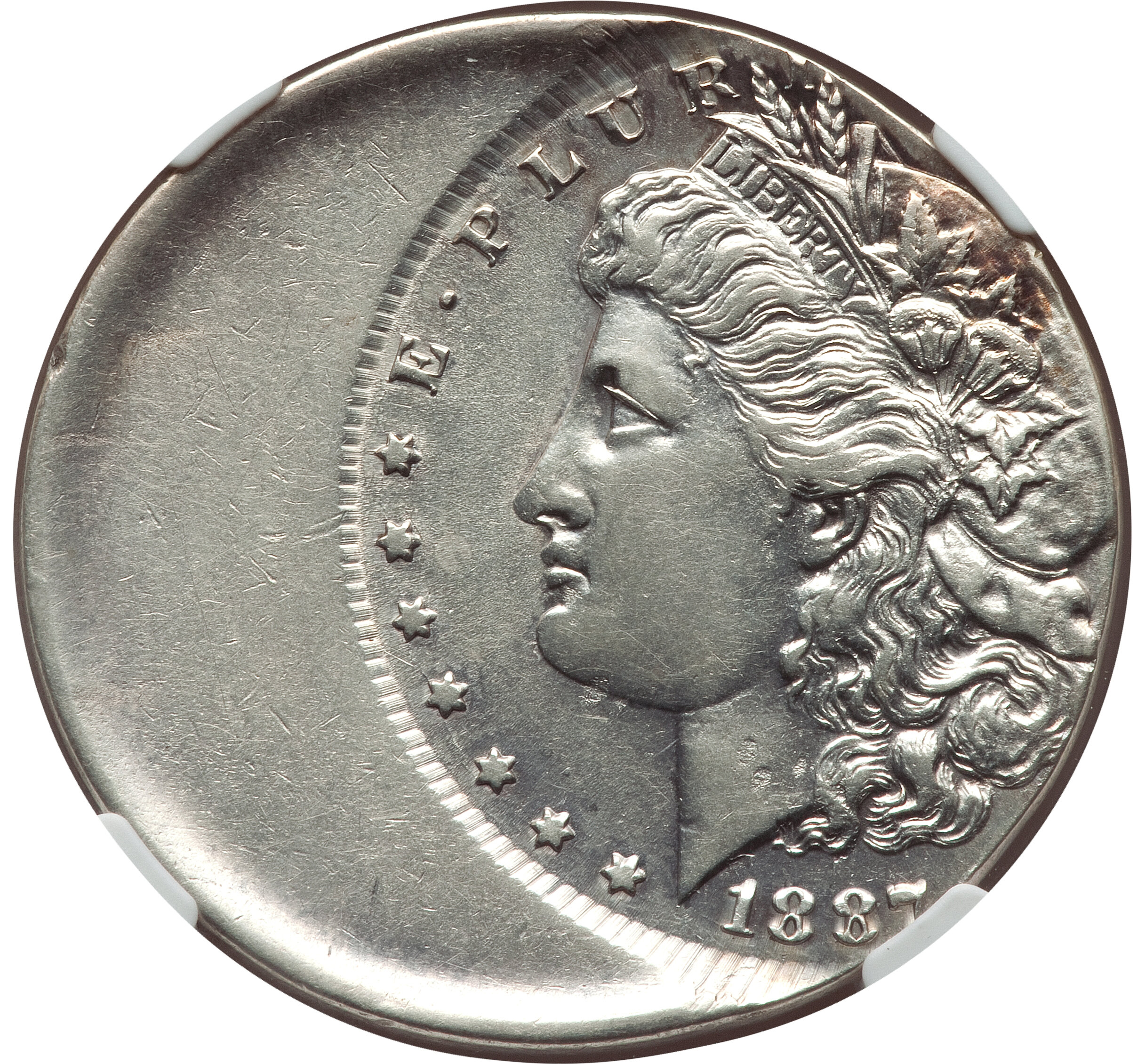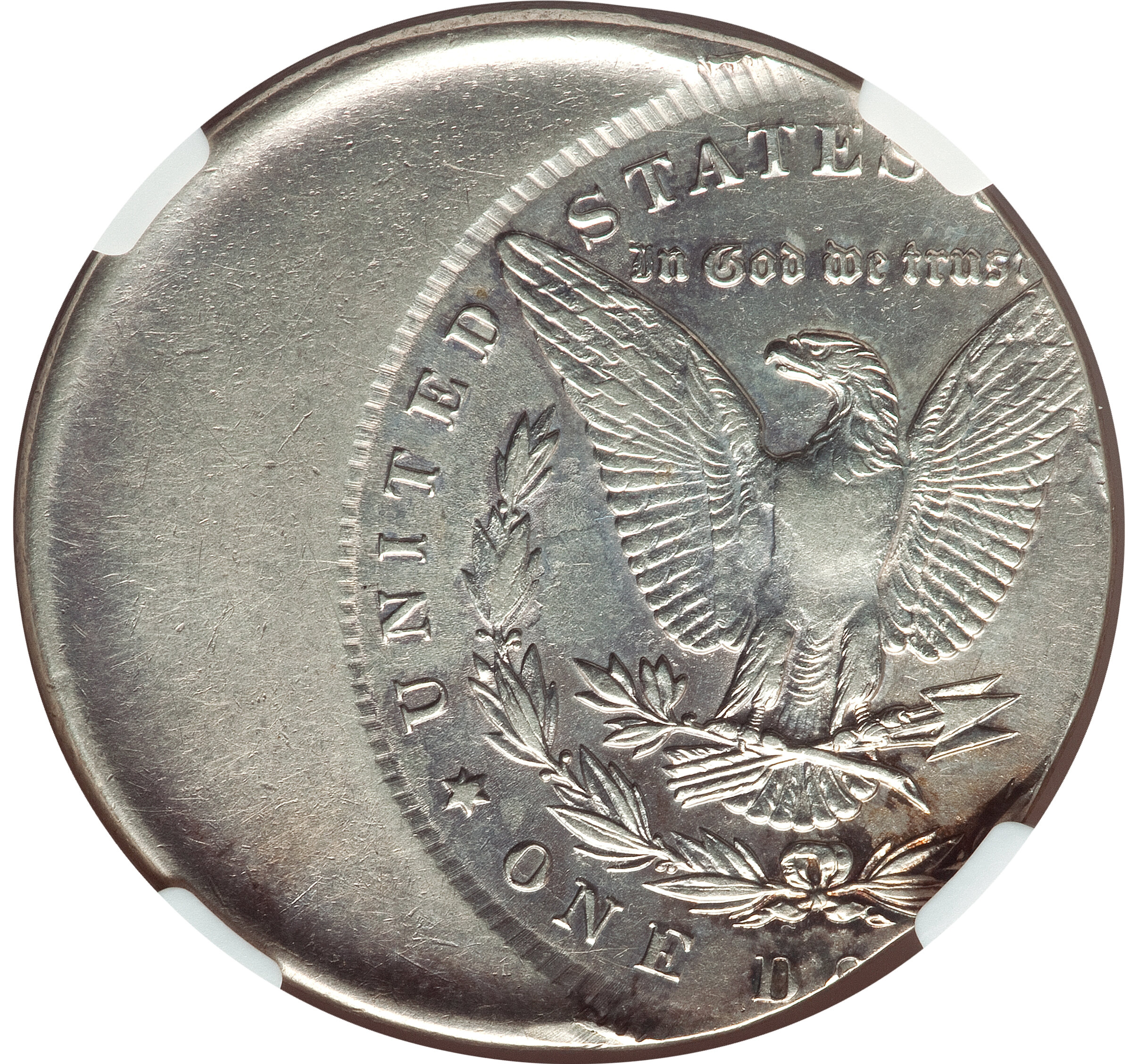The following rarities are featured in the upcoming January 2026 FUN US Coins Auction #1390.
Images Courtesy of Heritage Auctions, HA.com
1873 Closed 3 Half Eagle, SP64
Sole Certified Specimen Example


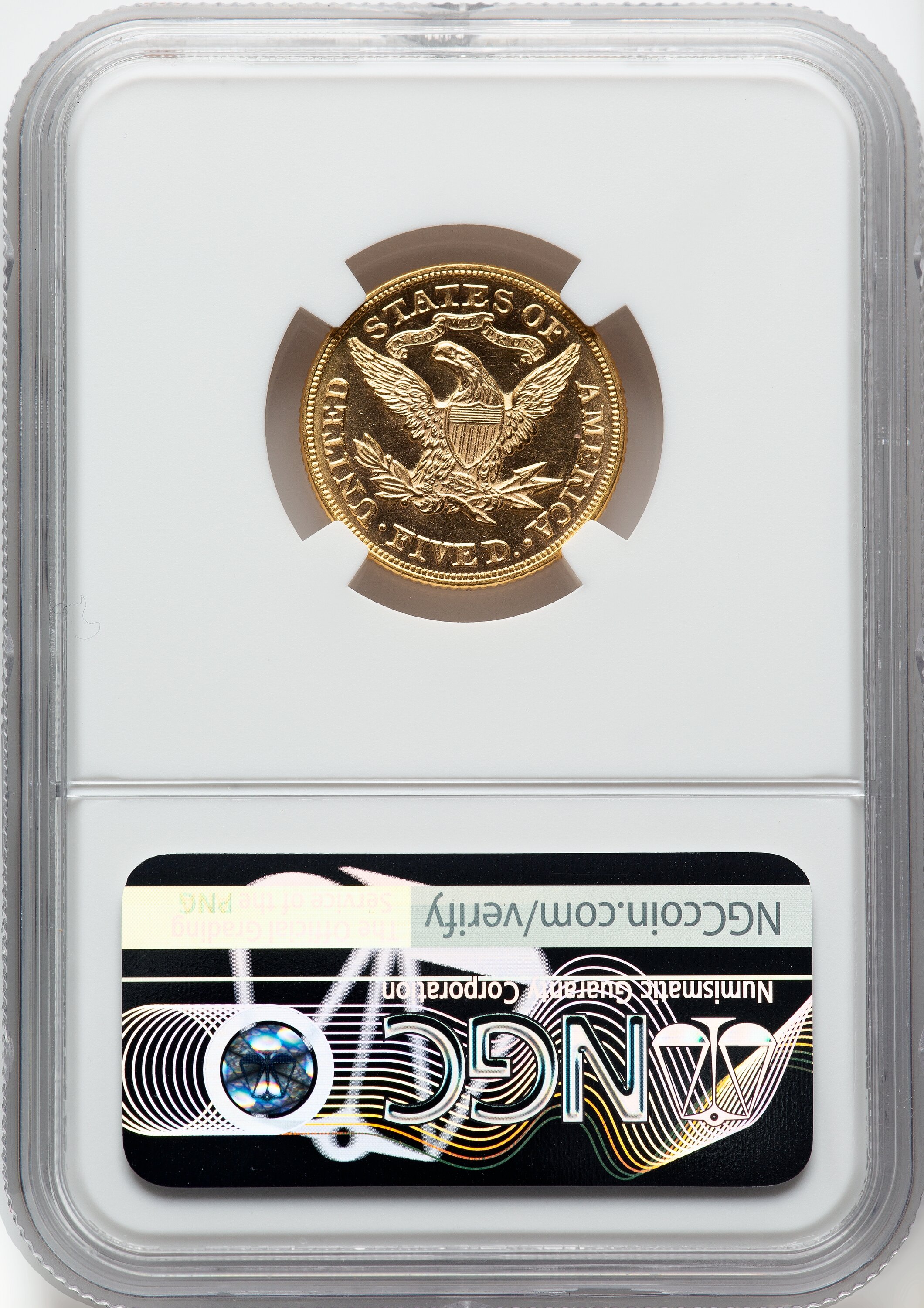
1873 $5 Closed 3 SP64 NGC. The Philadelphia Mint struck just 25 proof half eagles in 1873, all of which were delivered on February 18, but the coin offered here is something more special -- the sole certified Specimen strike from either service. It is a hybrid of sorts, with the deeply reflective fields and pinpoint-sharp, richly frosted devices of a highly contrasted proof, as well as the Closed 3 design type of all proofs of the year. However, it was struck from circulation strike dies. Unlike regular proofs, there is no polish seen between the shield stripes, and the second vertical line of stripe 2 does not extend into the horizontals above, diagnostic of the 1866A proof reverse used until 1880. Yet, it was clearly made with special care, and die polish lines suggest special preparation.
Proof 1873 five dollar gold pieces are rarely seen and are of great importance to gold specialists -- John Dannreuther estimates only 14-16 examples are extant in all grades today. This Specimen coin may have been a one-off special strike requested by Mint Director Linderman, or a trial strike prior to implementation of the Open 3 dies. No proofs or Specimen strikes are known of the Open 3 type. This coin possesses an irresistible combination of high technical quality, absolute rarity, and terrific eye appeal. We expect intense competition from series specialists and Registry Set enthusiasts when this lot is called. Census: 1 in 64 (1 in 64★), 0 finer (9/25).
Ex: Dallas Signature (Heritage, 8/2020), lot 4011; Summer FUN Signature (Heritage, 7/2021), lot 3122.




1891-O Seated Dime, PR66
Unique as a Proof; Unique Variety
First O-Mint Dime Production Since 1860


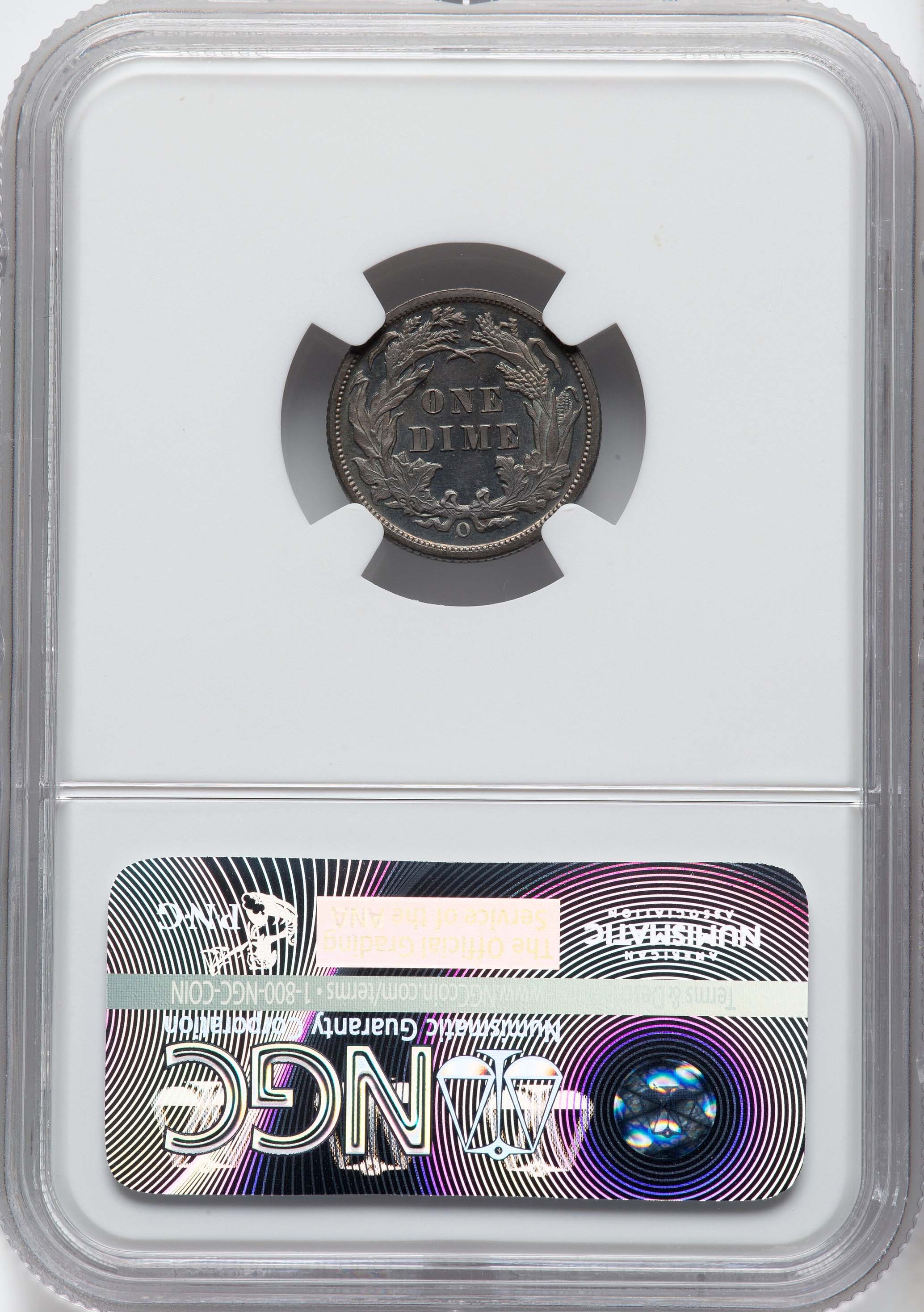
1891-O 10C PR66 NGC. Light cameo contrast results from the combination of satiny, lustrous devices, and fully mirrored fields that are warmly bathed in an array of sky-blue, rose, and champagne toning. The strike is absolutely full and complete, as expected for such a small coin struck on a large press intended for silver dollar coinage. This confluence of factors provide this Premium Gem proof with exceptional eye appeal.
The New Orleans Mint struck proof silver dimes and quarters in 1891. They were most likely struck on Sunday, July 5, the first day of production, to commemorate these denominations' resumption at the New Orleans Mint, where they had not been minted since 1860. The facility was opened in 1838 and operated continuously until January 1861, when it fell into the hands of the State of Louisiana, and a short time later, the Confederate government. Toward the end of the war, the U.S. government regained control. However, the Mint remained dormant for many years. In 1870, a joint resolution was referred to the Committee on Commerce regarding the New Orleans Mint, recommending that the buildings and property revert to the City of New Orleans, which had originally conveyed the grounds to the U.S. upon the Mint's inception. Nine years later, the Mint resumed operation, striking silver dollars and a small number of double eagles.
When dime and quarter production resumed twelve years after the Mint's reopening, the New Orleans Times-Picayune ran this brief but information-rich article in their July 26, 1891 issue:
"The United States mint is now engaged in coining one million dimes a month. The dime banks and other causes have created a scarcity and Uncle Sam has ordered his money factories to the rescue. There is considerable demand for the dimes. They are the first coins of that smallness the mint has made, and the same presses with which the dollars were coined are used, the ingots being also of similar size. The new dies reached here about the 1st of the month, and the dimes commenced to roll out on the 5th.
"The mint has on hand the bullion representing 3,000,000 trade dollars, shipped from the Philadelphia mint about two months ago, and the 863,000 ounces of uncurrent money sent from various sub-treasuries; so that there is no lack of silver to keep the presses going."
We have never seen or heard of another 1891-O proof dime, and the issue was unknown to Breen in his Encyclopedia of United States and Colonial Proof Coins. Two or three proof quarters are known, including the Dunham coin certified Specimen 66 NGC that we handled most recently in our August 2013 Chicago Signature, and which realized $161,000 in our 2008 May Long Beach Signature. The present dime was also struck from a unique die marriage. We were unable to match it to a known die marriage upon our first sale of the piece in 2014. However, proprietor of the Liberty Seated Dime reference website seateddimevarieties.com, Gerry Fortin, determined that the obverse is unlisted and confirmed the reverse as his Reverse P, with the mintmark close to the bow knot and tilted sharply left. Both dies are perfect, with no trace of date or mintmark repunching, no clash marks, no die cracks, and no evidence of lapping. This unique and extraordinary branch mint proof dime is destined to be one of the centerpieces of a specialized collection of Seated Liberty dimes.
Ex: Central States Signature (Heritage, 4/2014), lot 5574; FUN Signature (Heritage, 1/2016), lot 5316.




1898 Barber Dime Obverse Die Cap, MS61
Slightly Uncentered


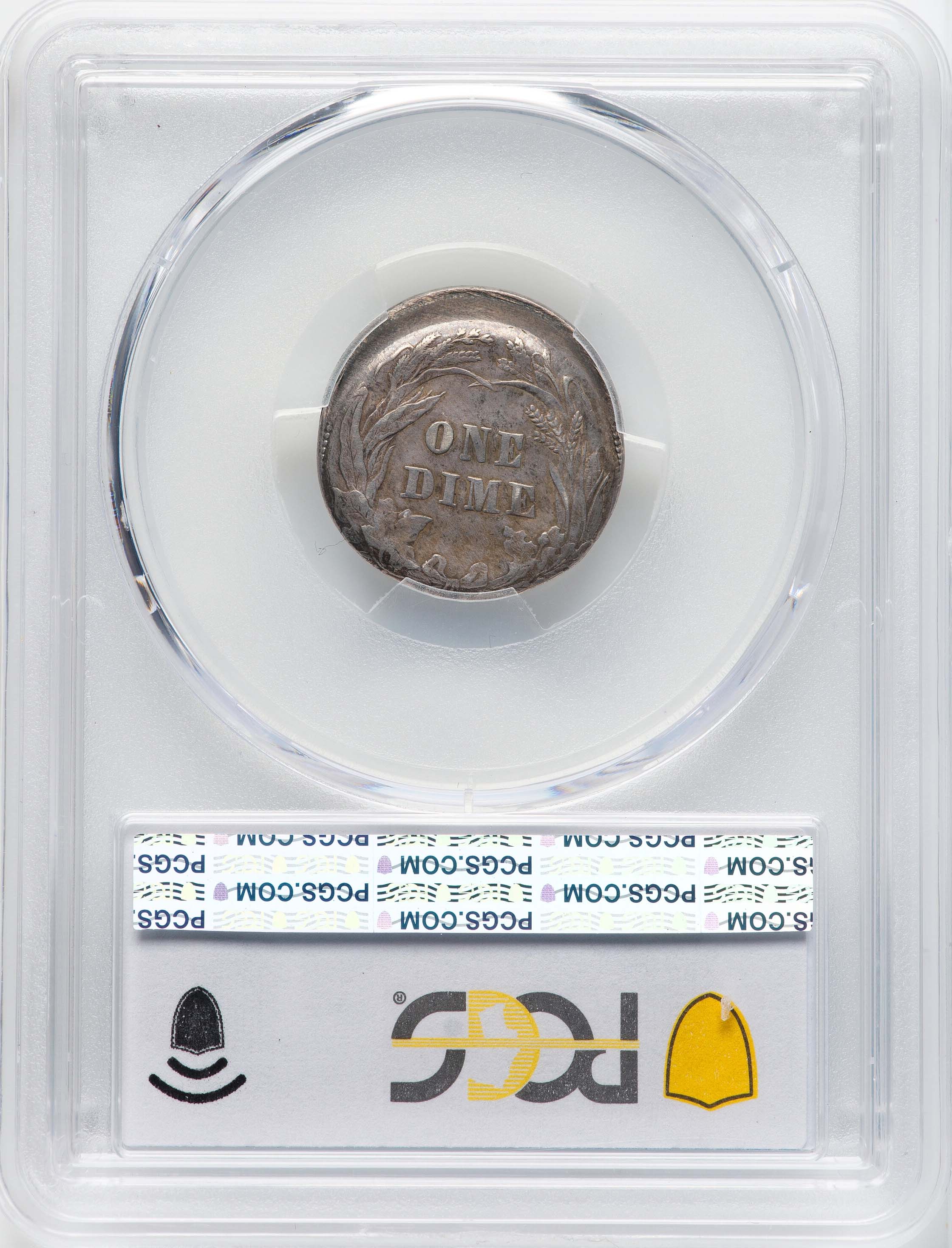
1898 Barber Dime -- Obverse Die Cap -- MS61 PCGS. The initial strike was was slightly uncentered and the coin became adhered to the obverse die in that uncentered position. Subsequent strikes occurred with new planchets fed between the struck reverse of the die cap coin and the face of the reverse die. The peripheral planchet metal of the die cap coin was forced up around the obverse die shaft, creating the "cap." Hints of gold, russet, and green-blue toning accent satiny gunmetal-gray toning.




1812 Half Eagle, Vibrant and Frosted MS66
BD-1, Wide 5-D, Double Struck
Final Year Draped Bust To Left Type
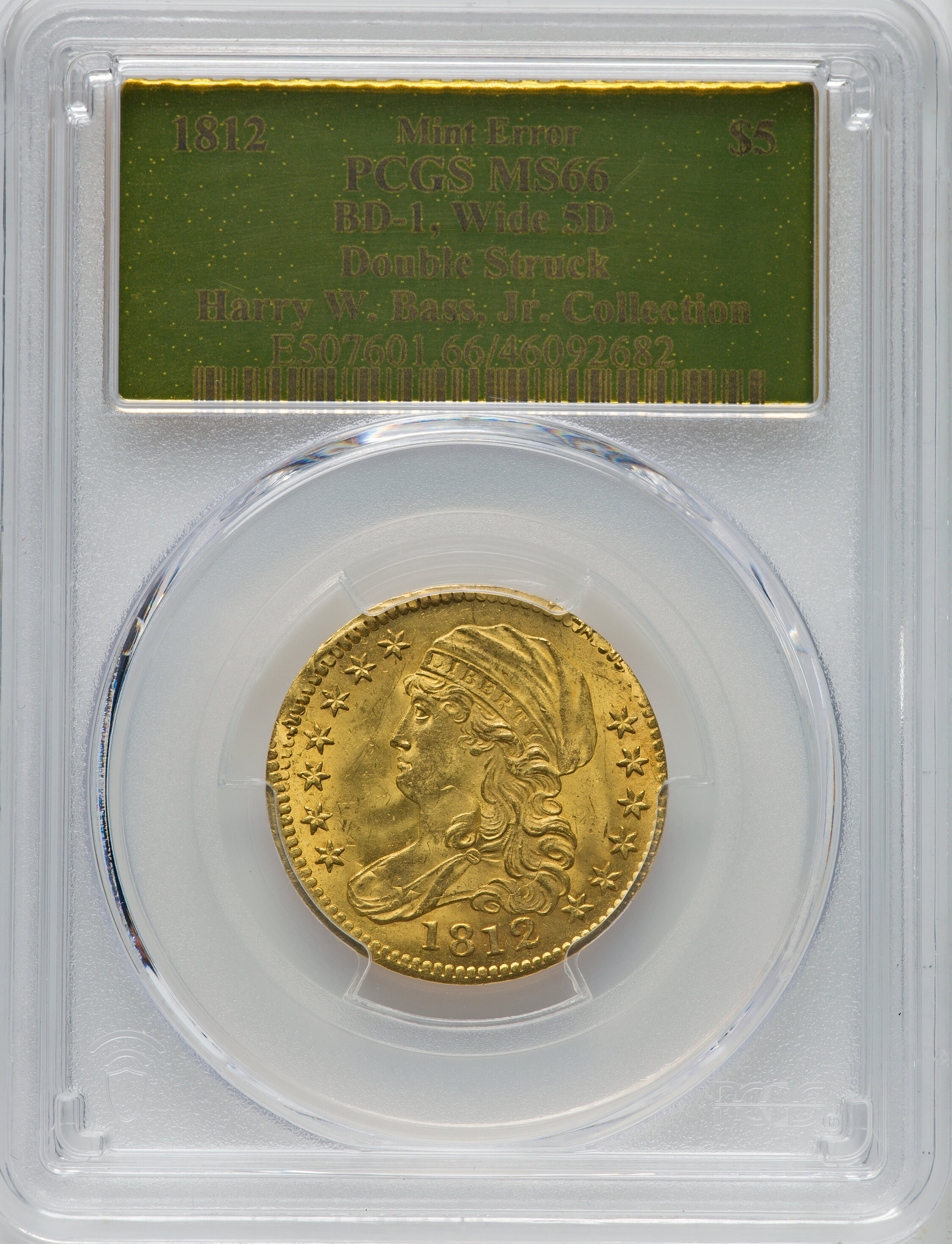


1812 $5 Wide 5D, BD-1, R.3, MS66 PCGS. Ex: Harry W. Bass, Jr. Collection. Bass-Dannreuther Die State a/a. The Harry W. Bass, Jr. Core Collection includes a remarkable Premium Gem BD-1 half eagle. This coin is struck from an early die state, although at first glance a later die state might be suspected. Close examination reveals the dies are not clashed, lapped, or cracked; rather, the coin is in fact double struck. It is a fascinating Mint error -- seldom seen for the type -- although the initial strike is somewhat obscured by the strong second strike. Anomalies appear along the rims as the ghostly remnants of an underlying initial strike are seen on each side. Adding to the intrigue is the realization that the first strike was off-center by about 15%, followed by a rotated second strike when the flan was subsequently fed into the coining press for its second impression.
The 1812 five dollar gold pieces represent the final year of the John Reich's Draped Bust half eagle design, offering two varieties defined by either the Wide 5D or Close 5D denomination. The BD-1 coins have an inexplicably wide gap between 5 and D, while the BD-2 pieces display the 5 and D normally spaced. The Wide 5D examples are by far the more available variety. The Bass double struck coin ranks a close second to the former Pogue Collection example on the BD-1 Condition Census. The coin is vibrantly lustrous and frosted throughout both sides, illuminating radiant green-gold color with olive overtones and wisps of orange within the eagle's shield. A lengthy raised die defect spans the eagle's wings left-to-right, curving across the horizontal shield lines and exiting the coin just left of the first A in AMERICA. The defect appears prior to any die clashing and seems to fade on later die states.
A Roster of Significant Examples (Provided by Ron Guth).
1. MS66+ PCGS. Norman Stack Type Set, purchased before 1986; Stack's, sold privately; Eric Streiner; Mark Yaffe and Kenneth Goldman; "From an old-time Eastern collection" (Superior, 8/1991), lot 711, not sold; Jay Parrino, sold privately circa 1994; Hanks and Associates; Great Lakes Collection, sold privately in 6/2001; Hanks and Associates; D. Brent Pogue Collection, Part III (Stack's Bowers & Sotheby's, 2/2016), lot 3143, $158,625.
2. MS66 PCGS. A-Mark Coin Co., sold privately on 3/16/1978; Harry W. Bass, Jr. Foundation Collection (HBCC# 3124); Harry Bass Core Collection, Part III (Heritage, 5/2023), lot 4556, where it sold for $111,000; FUN Signature (Heritage, 1/2024), lot 4338. Double struck, first strike off-center. The present coin.
3. MS65+ PCGS. FUN Signature (Heritage, 1/2008), lot 3154, $161,000; Joan Zieg Steinbrenner Collection (Heritage, 8/2019), lot 3869, $102,000.
4. MS65+ PCGS. ANA Sale (Stack's Bowers, 8/2019), lot 5326, $90,000; D.L. Hansen Collection (PCGS Set Registry).
5. MS65 PCGS. Boston Rarities (Bowers and Merena, 8/2010), lot 1645, $97,750; Castle Pines Collection (Stack's Bowers, 8/2021), lot 4206, $96,000.
6. MS65 PCGS. Prior provenance unknown.
7. MS65 NGC. Long Beach Signature (Heritage, 9/2003), lot 7918, $19,550; Pre-Long Beach (Goldberg Auctions, 9/2009), lot 3369, $69,000.
8. MS65 NGC. Nathan M. Kaufman Collection (RARCOA, 8/1978), lot 802; Harry W. Bass, Jr. Collection, Part III (Bowers and Merena, 5/2000), lot 312, $19,550; Rarities Sale (Bowers and Merena, 7/2002), lot 780, $35,650; Freedom Collection (Heritage, 1/2007), lot 3525, $63,250; Pre-Long Beach (Goldberg Auctions, 9/2009), lot 3370, not sold; Pre-Long Beach (Goldberg Auctions, 5/2010), lot 1565, $71,875; Chicago Signature (Heritage, 8/2011), lot 7537, $74,750.
9. MS65 NGC. FUN Signature (Heritage, 1/2010), lot 2170, $74,750.
10. MS65 Uncertified. "Taylor" (unidentified source); W. Elliot Woodward, sold privately on 2/28/1880; T. Harrison Garrett Collection; Robert Garrett Collection; John Work Garrett Collection; Johns Hopkins University Collection, Part I (Bowers and Ruddy, 11/1979), lot 457, $20,000.


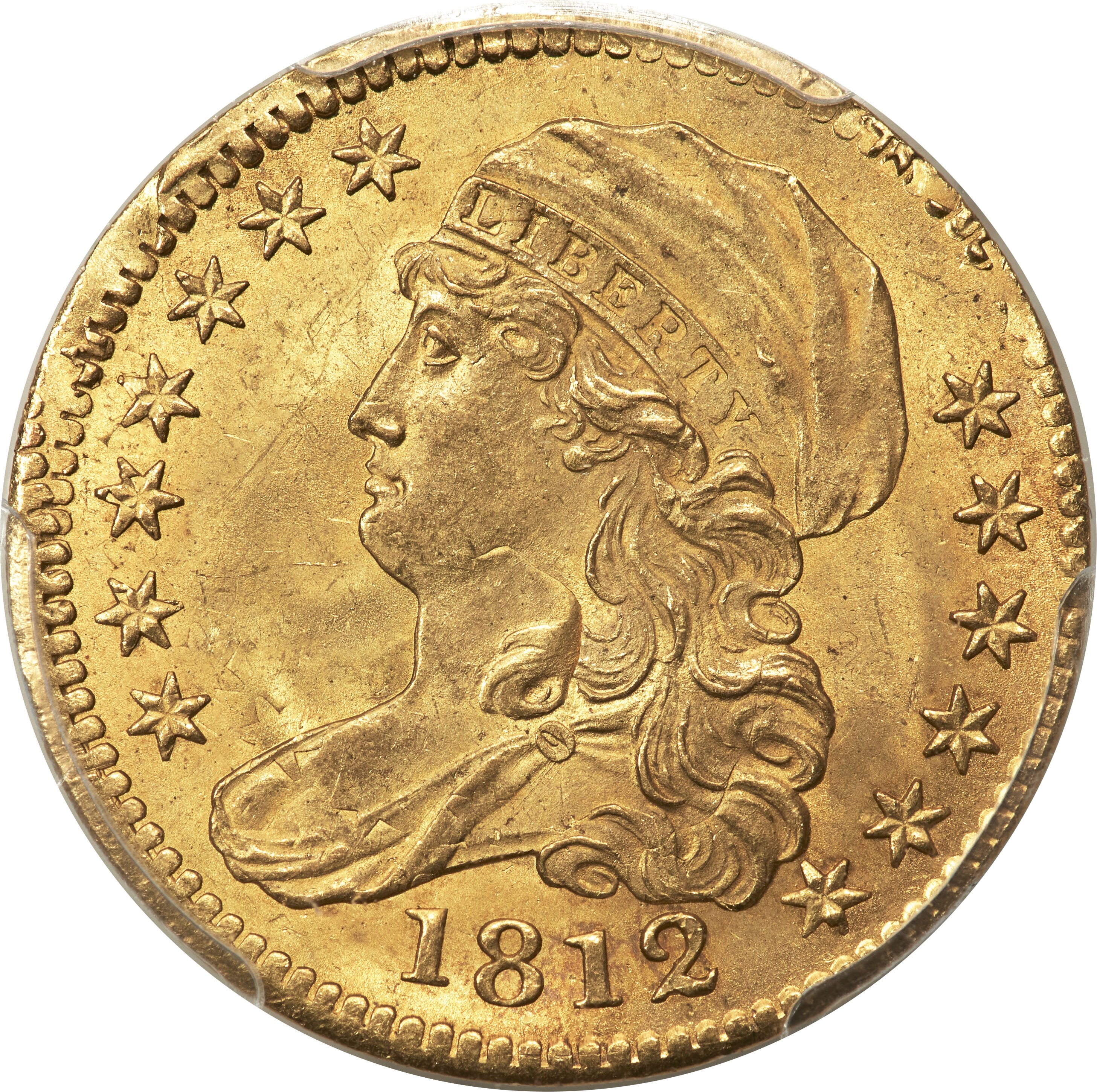

The first strike was 15% off-center and it rotated
50 degrees when it was placed back in the coining press:


1855-O Gold Dollar, AU Details
Double Struck, Second Strike Off Center


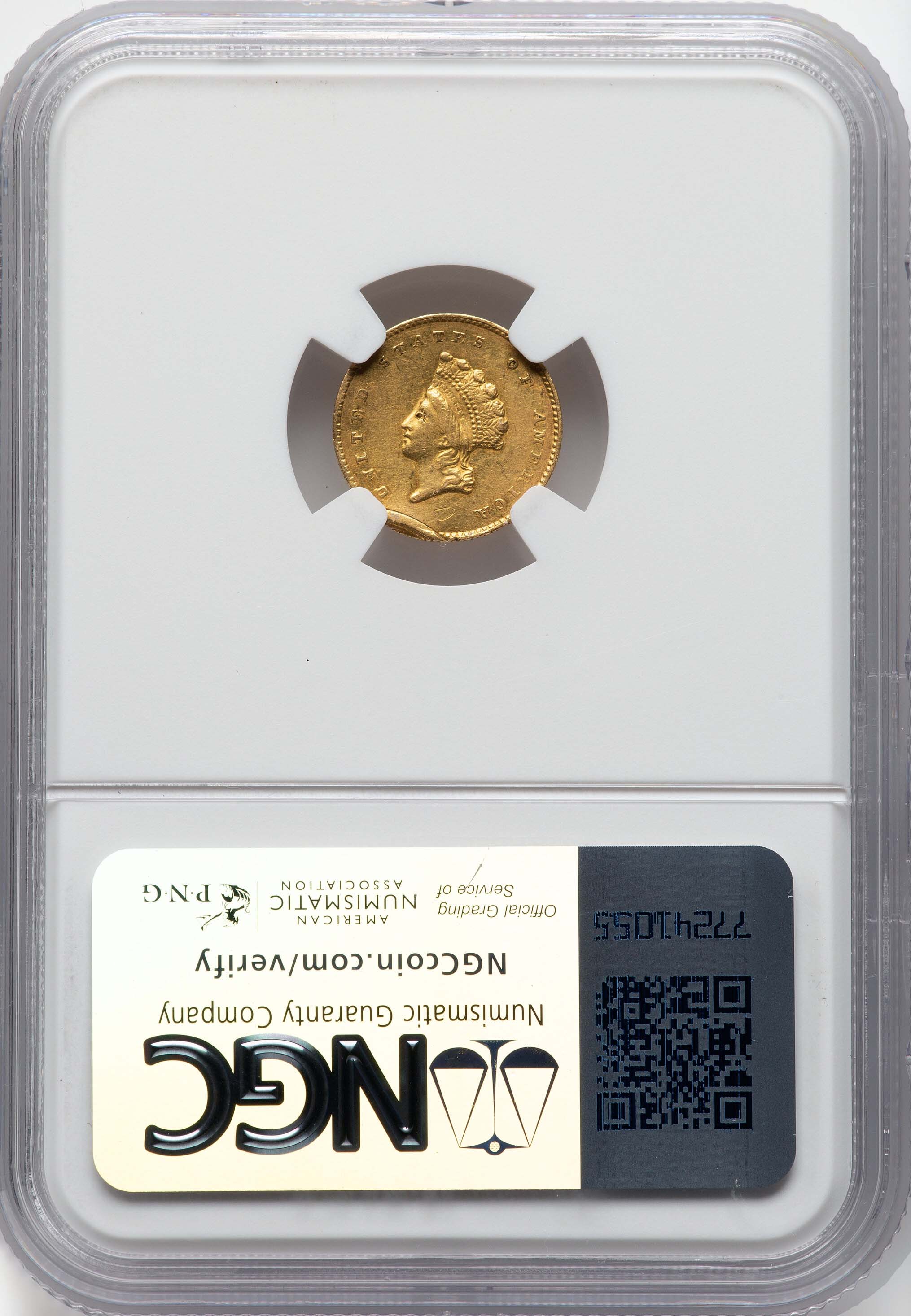
1855-O G$1 -- Double Struck, Second Strike Off Center -- Damaged -- NGC Details. AU. Winter-2. This is a rather spectacular piece, not simply because it is an off-center double strike error, but because it is the rare occurrence of that error type on a gold coin. Moreover, it occurs on a New Orleans gold dollar of the Type Two design, rendering it all the more interesting and unique. The first strike was normal, while the second strike was 95% off center toward 7 o'clock relative to the obverse. Only a portion of the dentils and rims of the second strike are evident. NGC notes Damage due to the small dig at Liberty's eye; otherwise, the coin is satiny, lustrous, and has attractive orange-gold color. Relatively few off-center double strikes are known on any U.S. gold piece due to the rarity of gold error coins as a whole. It has been published elsewhere that the current coin is the only double struck gold coin with the second strike off center that has currently come to light, and we have no evidence to suggest that assertion is not still current for this piece.




(1942-1945) Australia Florin, MS62
Struck on a U.S. Five Cent Silver Planchet
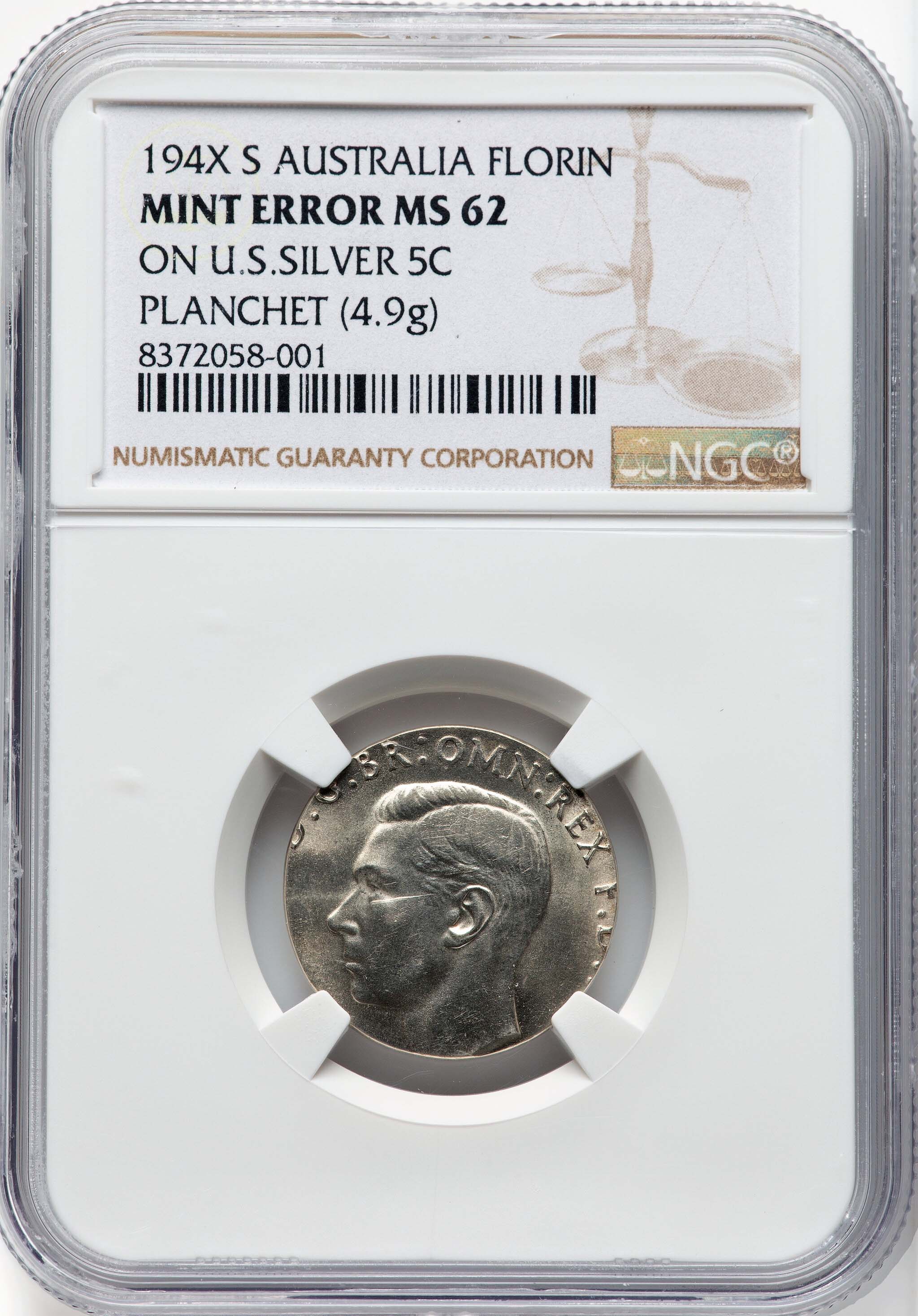


194X-S Australia Florin -- Struck on a U.S. Silver Five Cent Planchet -- MS62 NGC. 4.9 grams. One of two examples known for this specific error, showing a 1940s Australia Florin struck on a silver wartime nickel planchet. The San Francisco Mint struck Australian Florins from 1938 to 1945, overlapping the period in which the same mint utilized silver-alloy planchets for U.S. nickels (1942 to 1945). The present piece shows the S mintmark clearly on the lower reverse, but the date of the coin is off the flan. Each side is brilliant and satiny, with a couple hair-thin scratches on the portrait that limit the grade.




Lincoln Memorial Cent, MS64+
Struck on a 2.8-Gram Screw



Undated Lincoln Memorial Cent -- Struck on a 2.8 gram Screw -- MS64+ PCGS. A metal screw, approximately 30 mm in length, was struck between Lincoln Memorial cent dies to create the present dramatic mint error. The screw appears to have a steel alloy, but portions of the piece struck by the reverse die have a copper-red color, perhaps from traces of copper in the die chamber that adhered to the screw during the strike. The threads of the screw are mostly flattened on the obverse side, which displays LIBERTY and IN GOD WE TRU. Lincoln's head is present except for his jaw, mouth, and nosetip. On the reverse, the screw threads are partial. Flat areas show ONE CEN and the bottom left portion of the Lincoln Memorial. A memorable minting mishap.


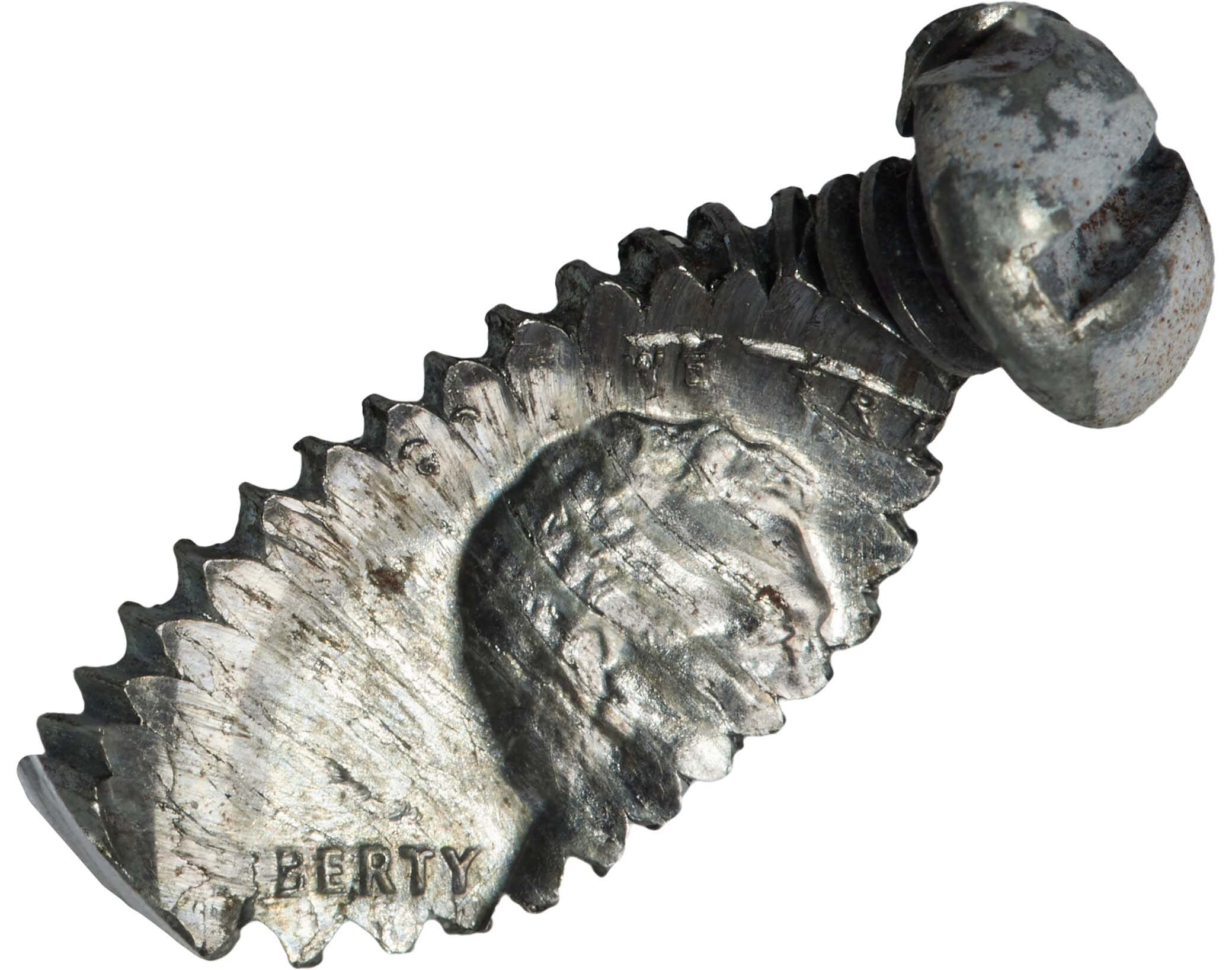

1883-O Morgan Dollar, MS63
Flipover Double Struck in Collar
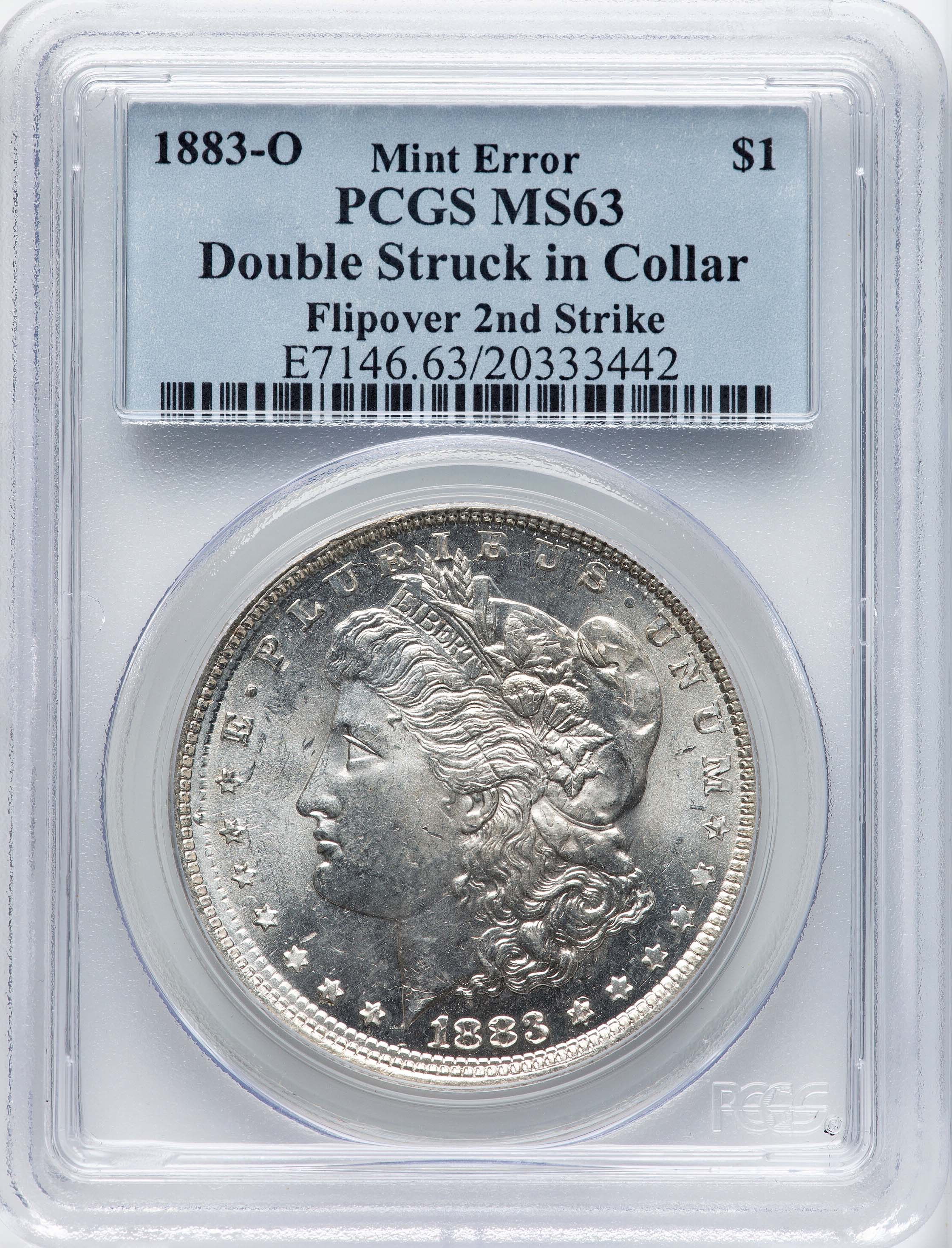


1883-O Morgan Dollar -- Double Struck in Collar, Flipover Second Strike -- MS63 PCGS. Flipover double strikes are rarely encountered, even on modern issues. They are extremely rare on 19th century silver type coins. This lustrous, untoned, and boldly struck O-mint dollar shows significant portions of its initial strike around the border on each side and across the central relief elements. The date from the first strike is readable, and located near the ON in ONE DOLLAR. The New Orleans mintmark from the first strike is also apparent, located beneath Liberty's highest shoulder curl.
Ex: ANA Signature (Heritage, 3/2011), lot 4334 (as NGC MS63).



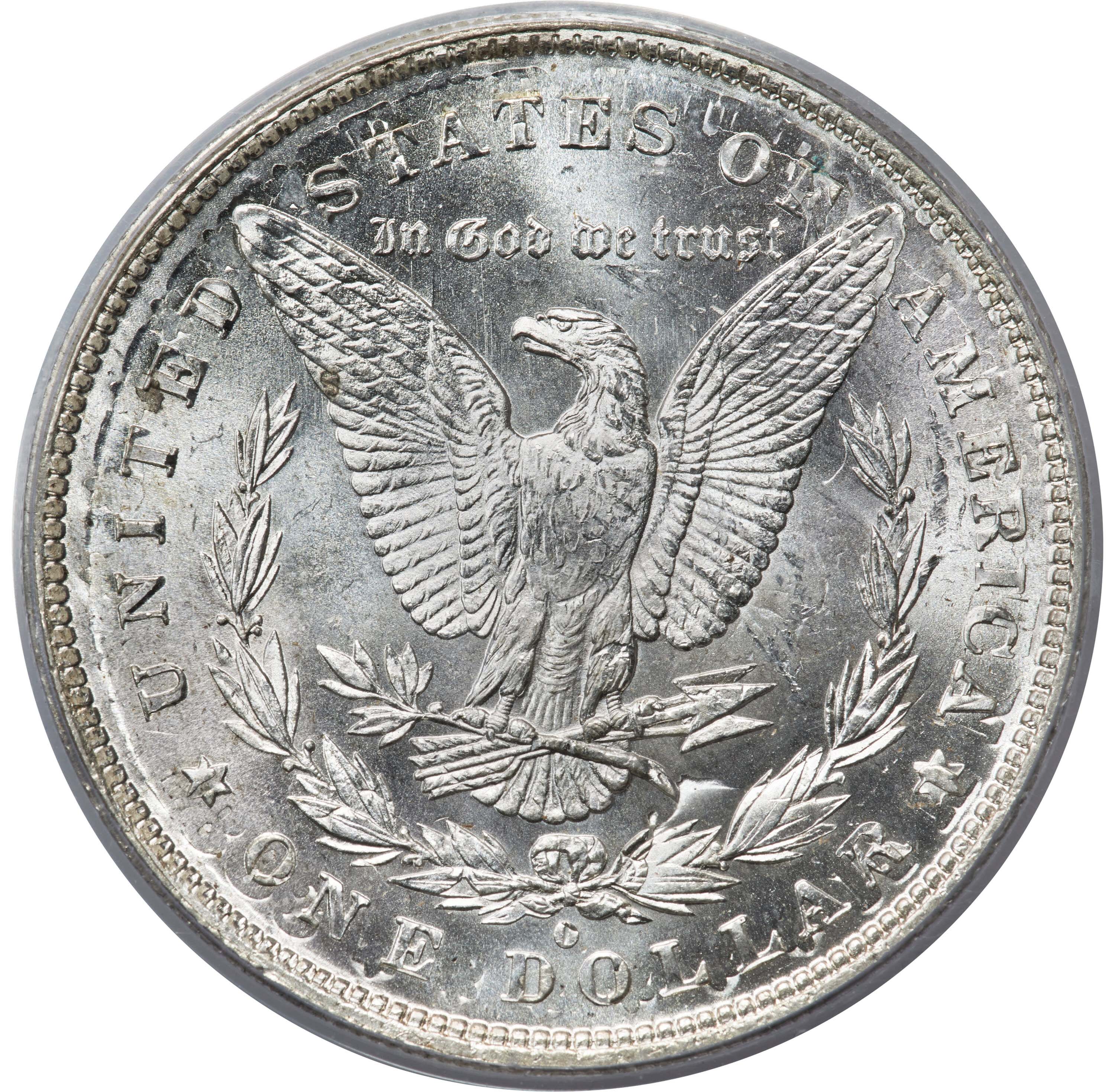
1969-S Lincoln Cent, MS64+ Red
The Tremonti Doubled Die Cent, CAC



1969-S 1C Doubled Die Obverse, FS-101, MS64+ Red PCGS. CAC. This important, interesting, and generally unavailable variety has one of the most surprising backgrounds in 20th century American numismatics. As described in several publications, counterfeit doubled die cents dated 1969 had appeared, and government agents confiscated any examples they came across. The legitimate 1969-S doubled die pieces were caught up in this dragnet; Fivaz and Stanton report that the coins were later authenticated by the Mint and returned, while Lange's The Complete Guide to Lincoln Cents states that the Mint destroyed at least a few of the S-mint coins. That early excitement greatly increased the notoriety of the 1969-S doubled die coins, though the population of survivors remains excessively low.
The piece offered here, however, has no such story of confiscation and redemption. In fact, its history is essentially blank until October 3, 2007, when collector Michael Tremonti discovered the coin in a heretofore-unsearched roll of 1969-S cents. As related by Ken Potter in a report for the October 29, 2007 edition of Coin World, the noted numismatist was understandably skeptical: " ... I just assumed that his find was one of the exceedingly common examples of strike doubling found on this date. ... I advised [Tremonti] of this, but he shrugged it off as not being what he found."
While Potter agreed to examine the coin, he was not expecting to find an actual doubled die: "Even though [Tremonti] sounded like he knew what he was talking about, I was still prepared to find an example of strike doubling. To my surprise, what I beheld was a Brilliant Uncirculated example of the 1969-S Lincoln, Doubled Die cent."
Interest in the 1969-S Doubled Die cents remains strong, although Mint State pieces are seldom seen. We last sold this piece in January of 2008 for $126,500, surpassing what many collectors and dealers had speculated the coin would fetch. Among the authorities suggesting the possibility of a significant price at that time was David Hall. His commentary, as printed in the November 13, 2007 edition of Numismatic News: "I was totally amazed that this coin could turn up out of nowhere. The coin is completely original and full mint red. ... What an incredible find! This could be a six-figure coin."
The shining surfaces of this important cent are fresh copper-orange with a triangular area of peach-umber behind Lincoln's head. The strike is crisp, and the peripheral elements of the obverse show this variety's characteristic doubling, with the effect most prominent at LIBERTY and the date. Though a handful of marks are present in the fields, the devices are attractively preserved, and the overall effect is tantalizingly close to a Gem designation.
The combined certified populations of NGC and PCGS show just two Gem 1969-S Doubled Die cents as the highest-graded examples, one at each service and both graded as Red. This remarkable DDO is the sole example in MS64+ Red, separating it from the Choice examples to claim the sole third finest graded piece amongst PCGS and NGC. This example has been approved with the CAC green sticker, and the variety is listed in the 100 Greatest U.S. Modern Coins by Scott Schechter and Jeff Garrett.
Ex: FUN Signature (Heritage, 1/2008), lot 2718.


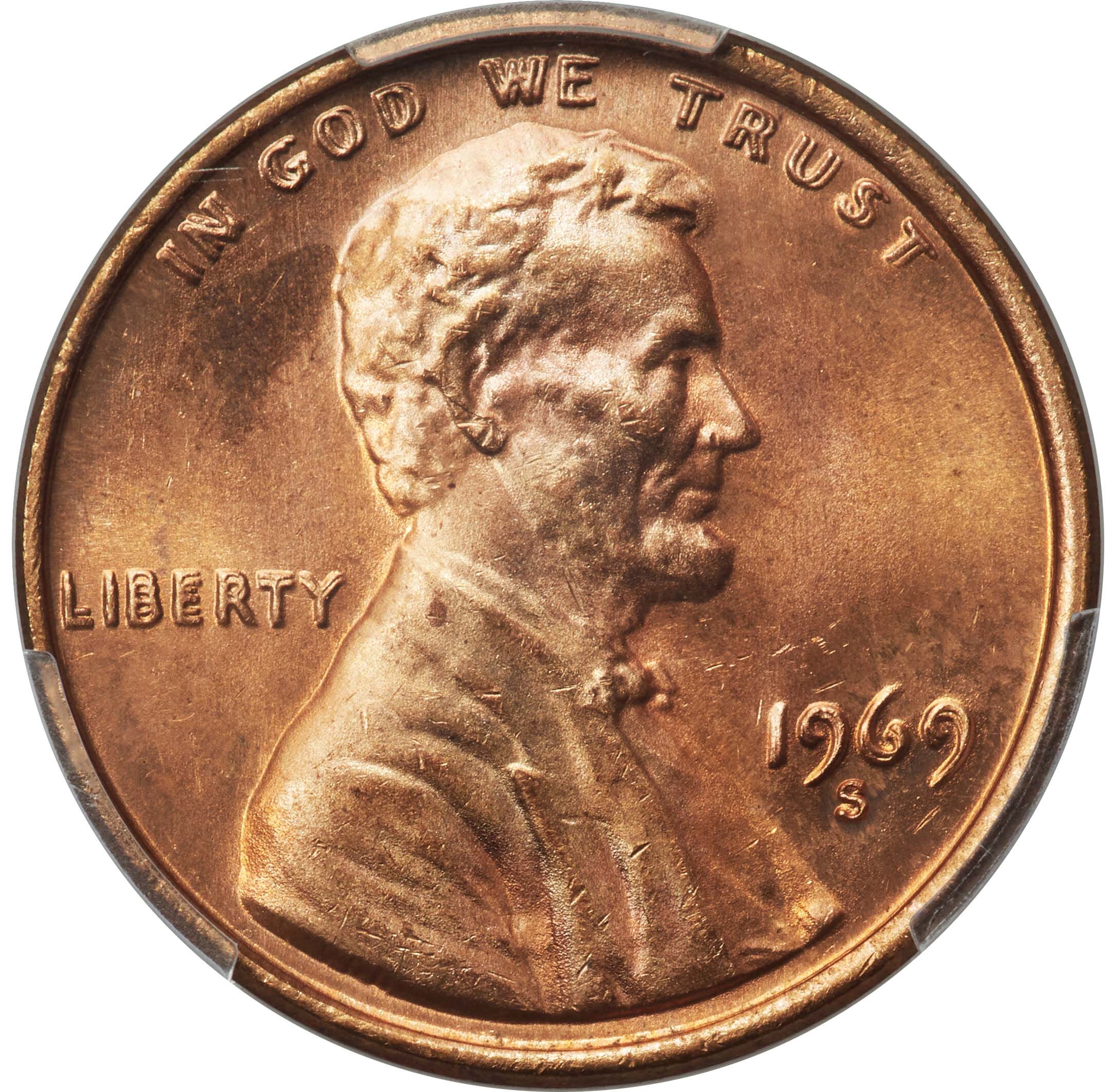
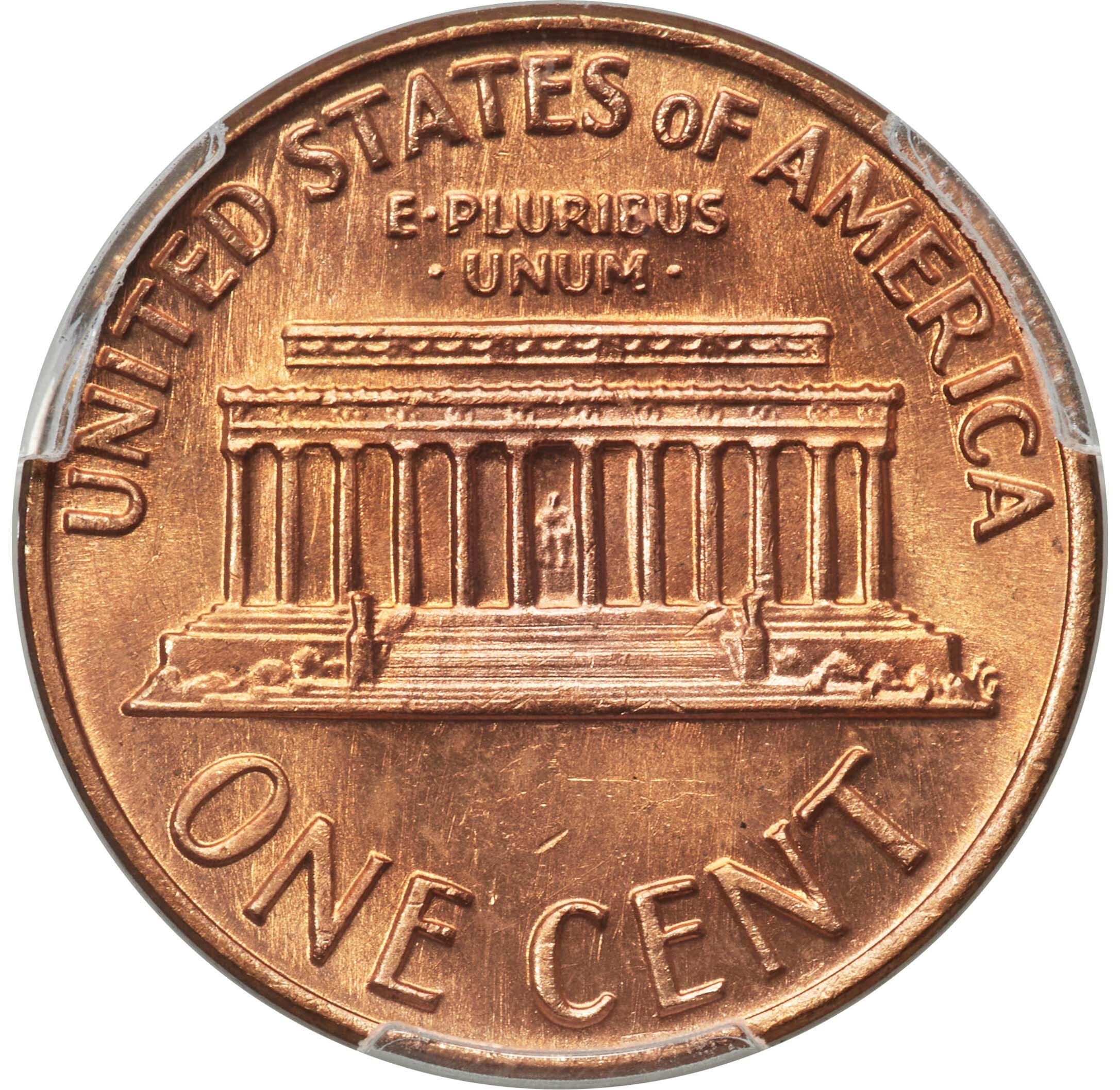
1887 Morgan Dollar, AU Details
Struck 30% Off Center
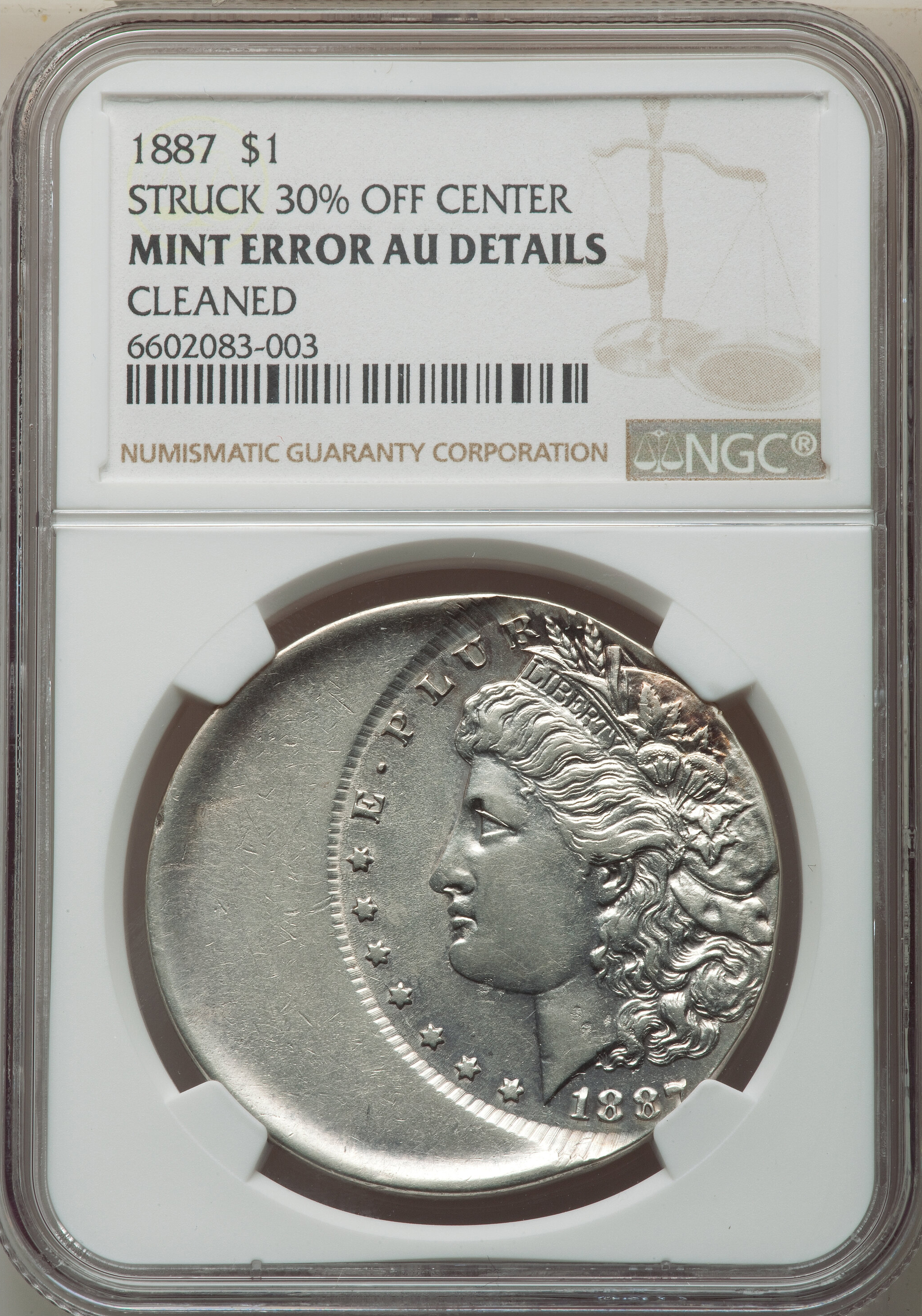

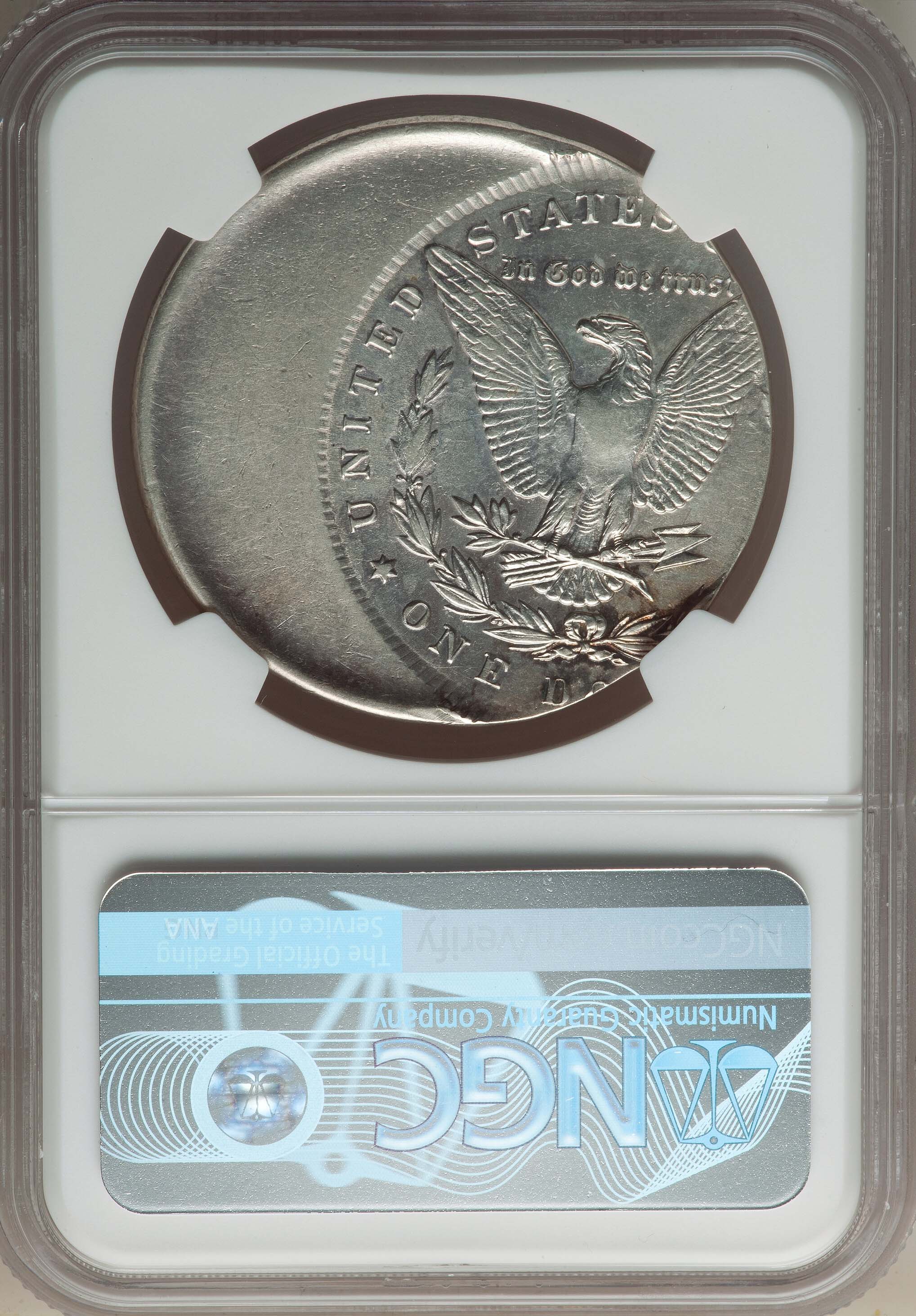
1887 Morgan Dollar -- Struck 30% Off Center -- Cleaned -- NGC Details. AU. Struck widely off center toward 2:30 and exceedingly rare so. This silver dollar shows nearly all of the date, only missing the tail of the 7. The mintmark area is intact, confirming a Philadelphia origin. OF AMERICA, BUS UNUM, and LLAR are absent.
Mostly stone-white, with hints of russet and blue-green toning near the wreath bow and the top of Liberty's cap. Probably dipped in its past, but nonetheless desirable. Liberty's chin and neck display a few small oval-shaped strike-throughs, as made.
Ex: The Misfits Collection of US Error Coins Showcase, Part 2 (Heritage, 12/2022), lot 93224.


